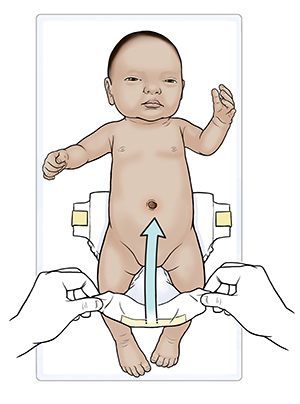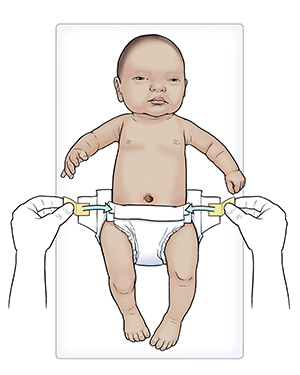Change your baby’s diapers when the diaper feels wet or heavy or if you find stool (bowel movement). In general, expect to change your baby shortly after each feeding.
Be prepared
Important! Never leave your baby alone on the changing table. It's important to have everything you need to change your baby's diaper easily within reach. This should include at least a clean diaper and something to use as a wipe to clean your baby.
What to expect by the end of the first week
-
Expect about 6 to 8 wet diapers daily.
-
The urine should be pale in color and have little odor.
-
Most babies have a bowel movement after every feeding or at least several times a day. Some babies may have bowel movements only every few days.
-
Stool color and consistency should change as the first week passes. It will continue to change, depending on what you are feeding your baby.
At each diaper change
-
Keep your baby rash-free by cleaning their bottom every time you change diapers.
-
Wash away urine and stool with a warm, wet cloth, or commercial baby wipes, and don’t forget to clean between the skin folds.
-
Wipe girls from the front to the back to help prevent infection.
-
If your baby boy was circumcised, care for the penis as directed.
-
Dry your baby’s bottom completely before putting on the clean diaper.
-
You might want to apply a barrier diaper rash ointment to prevent diaper rash at each diaper change.
Wipe girls from front to back.
If you’re diapering with cloth
-
Fold the sides of the diaper in at an angle, so that the front of the diaper is 3 layers thick.
-
Bring the front of the diaper up between the legs without twisting.
-
Pull the front and back edges together. Pin each side. Insert the safety pin toward the outside of the diaper. Put plastic pants over the diaper.
-
To hold diapers in place without pins, use diaper wraps with sticky flaps on either side.
Featured in





